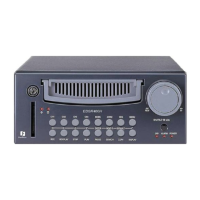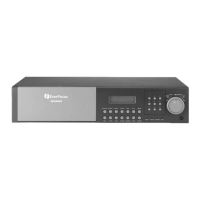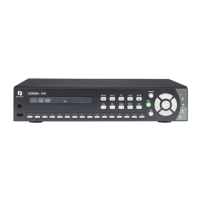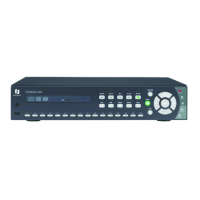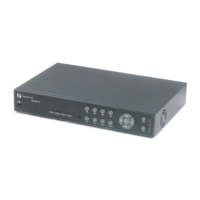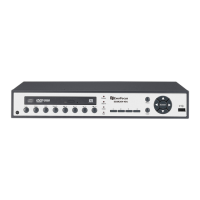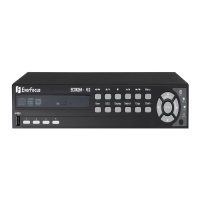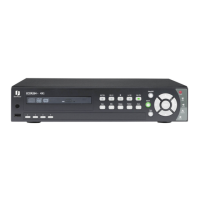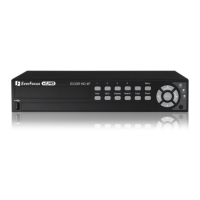Do you have a question about the EverFocus EDR410H and is the answer not in the manual?
Details important safety instructions, warnings, and precautions for operating the device safely.
Introduces the digital video recorder and its purpose in the security industry.
Lists the key features and capabilities of the digital video recorder.
Provides detailed technical specifications for the DVR model.
Describes the function of each button and dial on the DVR's front panel.
Overview of the installation process for the DVR.
Guides on connecting cameras, monitors, and other peripherals to the DVR.
Step-by-step process for installing the hard disk drive into the DVR.
Final steps to power on and prepare the DVR after installation.
Explains how to navigate and use the DVR's main setup menu system.
Configuration for setting the system's time, date, and daylight saving.
Settings for individual cameras, including titles, quality, and recording speed.
Options for configuring recording settings like audio, timestamp, and resolution.
Configuration for alarm detection, types, and associated actions.
Settings for motion detection sensitivity, duration, and network alerts.
Configuration for video loss detection and system response.
Settings for network connectivity, IP configuration, and remote access.
Defines recording schedules based on day, start time, and end time.
Information on disk status and formatting options for storage.
Configuration for serial communication ports (RS232/RS485) and PTZ control.
Settings for system warnings like fan fault, HDD temperature, and no HDD.
Options for system version, video format, software update, and password settings.
Explains the different recording modes available on the DVR.
How to start and stop recording immediately using the REC button.
Setting up timed recording sessions based on the schedule.
Configuring the DVR to record based on detected events like alarms or motion.
Introduction to reviewing recorded video footage.
Controls for playing, stopping, and rewinding recorded video.
Methods for finding specific recorded events by time or event type.
Instructions on transferring video footage to external storage.
How to access and play back video files copied from the DVR.
Explains the setup and function of the call monitor display.
Adjusting display parameters like brightness, contrast, and color.
Switching between different display layouts (e.g., 4, 7, 8, PIP).
Detailed instructions for updating the DVR's system firmware.
Introduction to network concepts and DVR connectivity.
Explanation of TCP/IP protocols used for network communication.
Understanding subnet masks for network identification.
Role of gateway addresses in network communication.
Explanation of port numbers for network resource access.
Questions and checks before setting up network connections.
Overview of available network connection methods.
Configuring port forwarding on Linksys routers for remote access.
Setting up Dynamic DNS for accessing the DVR with a changing IP address.
Configuring port forwarding on D-Link routers for remote access.
Explains Dynamic DNS and its purpose.
Step-by-step guide to creating an account with a DDNS provider.
Accessing and viewing the DVR feed via a web browser.
Details on the DVR's physical and communication interfaces.
Configuration of serial communication speeds (baud rates).
Understanding the protocol for controlling the DVR remotely via computer.
Description of the remote control unit and its functions.
Details on connecting alarm sensors to the DVR's alarm board.
Pinout details for the RJ45 (RS485) connectors on the DVR.
Common issues and solutions for operating the DVR.


